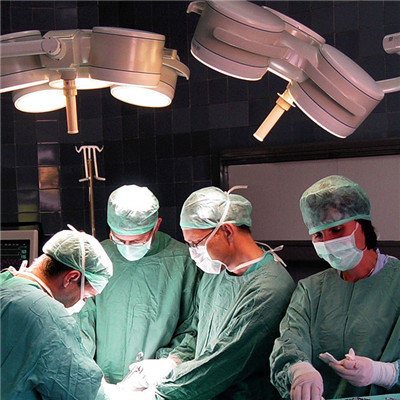Can congenital high scapular disease be operated on?
summary
Congenital high scapular deformity was first reported by eulenber in 1863. In 1891, Sprengel reported 4 cases and discussed the etiology. Therefore, it is also called Sprengel deformity. The pathogenesis of this disease is due to the decline and dysplasia of the scapula in the process of embryonic development, so it is also known as hypoplasia of the scapula. In the early embryonic stage, the scapular primordium was formed in the neck, which was equivalent to C4-C6 level, and then gradually decreased to the normal position between T2 and T8. Due to some factors, such as high intrauterine pressure, muscular dysplasia of the scapular band, abnormal tissue connection between the scapula and spine, the descending process of the scapula was obstructed, resulting in high deformity of the scapula. Can congenital high scapular disease be operated on?
Can congenital high scapular disease be operated on?
Congenital high scapular disease, also known as scapular insufficiency, is a rare congenital malformation. The disease was first reported by eulenberg, and then Sprengel was introduced in detail, so it is also called Sprengel malformation. The disease is rare in clinic, mostly unilateral, bilateral is very rare, more common in women, often combined with rib, cervicothoracic congenital malformations, such as cervical rib, forked rib, vertebral fusion, spina bifida, rib absence and so on. At present, the etiology and pathogenesis of the disease is not clear. It is generally believed that in the process of embryonic development of the scapula, due to the influence of some factors, such as genetic factors, high intrauterine pressure, muscular dysplasia of the scapular band, abnormal connection between the scapula and the spine and so on, the descending process of the scapula is obstructed, resulting in high scapular syndrome.

The pathological changes are mainly divided into two aspects: one is the change of bone. Because of the high position of the scapula, the upper part of the scapula is bent forward and more than the upper edge of the thorax. The inner edge and lower angle of the scapula move inward to the spine. The obvious inward movement often has bony, cartilaginous or fibrous connection with the spinous process of the adjacent cervical spine and upper thoracic spine. There is a fiber bundle and a cartilage or bony band between the upper angle of the scapula and the spinous process and transverse process of the cervical spine, which is called the shoulder vertebral bridge. Second, muscle changes. Partial or complete defects of the muscles of the affected side of the scapula could be seen. Local muscles such as levator scapulae and rhomboid muscle became thinner, and muscle contracture or fibrosis could be seen in varying degrees.

Generally, the disease has no obvious clinical manifestations. The main manifestations of the disease are that the affected shoulder is higher than the healthy side or both sides after 1 year old. The older patients may be complicated with spinal and thoracic deformities, limited abduction and lifting of shoulder joint, and thoracic outlet syndrome. The characteristic X-ray manifestations of the disease are elevation, inward displacement and internal rotation of the affected side of the scapula, shallow and small glenoid. X-ray examination can clearly diagnose the disease. Rigault et al. Classified it into three grades according to imaging findings. The medial superior angle of scapula was lower than T2 and higher than T4, and the transverse process was grade 1; The medial superior angle of scapula between C5 and T2 transverse process is grade 2; The medial superior angle of scapula above the transverse process of C5 is grade 3. Surgical treatment is mainly suitable for children with severe deformity and obvious dysfunction. The effect is better when they are 3-7 years old. If they are too young, they are not easy to tolerate surgery. The classic operation methods mainly include Green's operation and Woodward's operation.

matters needing attention
High scapula is a congenital developmental disease. Vertebral body deformity with ligaments around scapula is the main manifestation, often with the development of nerve, resulting in compression symptoms. Orthopedic surgery is usually chosen, and the age of surgery is generally 3 to 7 years old.















